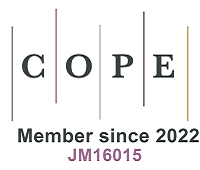Contents
Host

Prof. Houbing Huang
Advanced Research Institute of Multidisciplinary Sciences, Beijing Institute of Technology, Beijing, China.
HouBing Huang is a Professor at the Institute of Frontier and Interdisciplinary Science, Beijing Institute of Technology. He received his Ph.D. from Beijing Institute of Technology. His research focuses on phase-field simulations of microstructure evolution in ferroelectric and piezoelectric materials. He has published over 200 SCI-indexed papers, including seven in Science and Nature. He is a recipient of national-level young talent program funding and the Mao Yisheng Youth Science and Technology Award. He has led several major projects, including the NSFC Integrated Project, the National Defense Basic Science Challenge Program, and the Beijing Youth Talent Support Program. He serves as an Executive Council Member of the Phase-Field and Integrated Computational Materials Engineering Conference, a member of the Youth Working Committee of the Chinese Ceramic Society, and a council member of the Beijing Ceramic Society. He is currently an Associate Editor of Microstructures and a Youth Editorial Board Member of Materials Research Letters.
Speaker

Prof. Long-Qing Chen
Department of Materials Science and Engineering and Materials Research Institute, The Pennsylvania State University, PA 16803, USA.
Long-Qing Chen is Hamer Professor of Materials Science and Engineering at Penn State. He received his Ph.D. from MIT, M.S. from Stony Brook University, and B.S. from Zhejiang University. His main research interests include thermodynamic theory and computational model development for understanding solid phase transitions and microstructure development. His research awards include the Materials Research Society (MRS) Materials Theory Award, The Minerals, Metals & Materials Society (TMS) John Bardeen Award, American Ceramic Society (ACerS) Ross Coffin Purdy Award, TMS Cyril Stanley Smith Award, TMS William Hume-Rothery Award, The American Society of Metals (ASM) International Silver Medal, and IEEE Ultrasonics, Ferroelectrics, and Frequency Control Society (IEEE-UFFC-S) Distinguished Lecture Award. He is a Guggenheim Fellow, a Humboldt Research Awardee, a Foreign Member of Academy of Europe (Academia of Europaea, MAE), and a member of the US National Academy of Engineering (NAE).
Abstract
The core of materials research is the study and manipulation of the hierarchical microstructures of structural, magnetic, electric polarization, charge, and chemical domains at spatial scales ranging from the atomic scale electronic structures to the macroscopic continuum and time scales from femtoseconds to the service life of materials. It is the evolution of the mesoscale microstructures that largely control the responses of materials to external mechanical, magnetic, electric and chemical stimuli. This presentation will discuss the thermodynamic description of microstructures and the phase-field method to model and predict microstructure formation and evolution. It will start with introducing a modern version of the first law of thermodynamics and the corresponding fundamental equation of thermodynamics, which allows one to identity an independent set of thermodynamic variables and process parameters describing microstructures of interest, the driving forces microstructure evolution processes, and the connections to the properties of microstructures. It will be followed by a discussion on the energetics of microstructures involving both long-range elastic, electrostatic, and magnetic interactions and the short-range chemical interactions responsible for the interfacial energy. All familiar partial differential equations describing the relaxational or dynamical, thermal, mechanical, chemical, and electronic processes and the accompanying microstructure evolution can be derived from the rate of potential energy dissipation based on linear or nonlinear kinetics. Examples will be presented to highlight a few recent advances in phase-field method and illustrate the use of the phase-field method to help interpret experimental observations as well as to provide guidance to achieve desirable mesoscale structures in a wide variety of materials systems.










